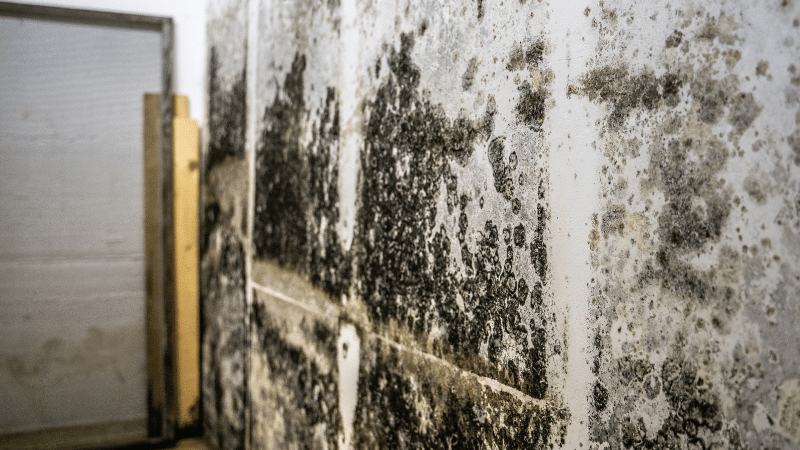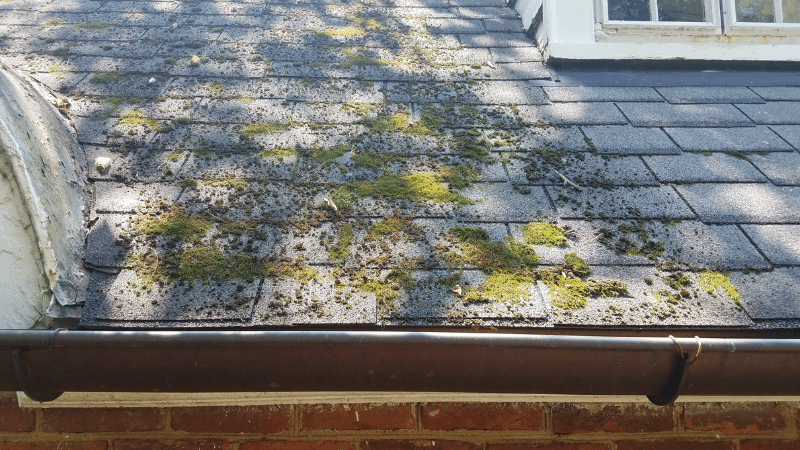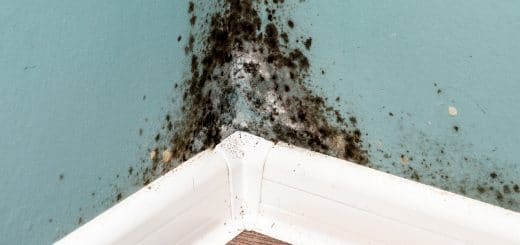How to Control Indoor Mold Growth This Spring
With the arrival of sunshine and warm weather, there are a lot of things to enjoy during the spring season. People can take in the nice weather and spend time outdoors sprucing up their gardens and planting colorful flowers to brighten up their yards. But there’s more to spring than just nicer weather. Spring is also a time of the year that is often used to tidy up your home, business, or building. One of the things you should be wary of while doing your spring cleaning is indoor moldMold is a type of fungus that grows in damp or humid conditi... More. This is especially the case considering that the temperatures are naturally warmer in the spring, increasing the chance for mold growth.

Although it’s a natural substance, indoor moldMold is a type of fungus that grows in damp or humid conditi... More is problematic and can not only damage your property but hinder the health of anyone exposed to it. Knowing this, it’s essential that you take the necessary steps to prevent indoor moldMold is a type of fungus that grows in damp or humid conditi... More growth this spring. Continue reading to learn more about how moldMold is a type of fungus that grows in damp or humid conditi... More grows, why it’s harmful, and how to control moldMold is a type of fungus that grows in damp or humid conditi... More growth.
How Does Mold Grow?
MoldMold is a type of fungus that grows in damp or humid conditi... More thrives in environments with moisture and even more so if it’s humid. So, if mold spores, which are naturally present in the air, encounter excess moisture and have an organic food source, then moldMold is a type of fungus that grows in damp or humid conditi... More growth is likely to occur. Among the materials that moldMold is a type of fungus that grows in damp or humid conditi... More uses as a food source are wood, drywall, insulationInsulation is a material used in buildings to reduce the tra... More, and other common building materials. Because of this, moldMold is a type of fungus that grows in damp or humid conditi... More can easily grow and quickly spread in a home, business, or building.
What Makes Mold Growth Harmful?
When moldMold is a type of fungus that grows in damp or humid conditi... More grows on surfaces like drywall, it is using the material as a food source. The moldMold is a type of fungus that grows in damp or humid conditi... More eats away at the material, ruining the surface. With enough damage, the moldMold is a type of fungus that grows in damp or humid conditi... More can jeopardize the structural integrity of your property.
In addition to property damage, when moldMold is a type of fungus that grows in damp or humid conditi... More is present in your home or business, the indoor air qualityIndoor air quality (IAQ) refers to the condition of the air ... More is affected. Exposure to moldMold is a type of fungus that grows in damp or humid conditi... More can also result in various health problems like allergies and respiratory concerns. Prolonged exposure can leadLead is a heavy metal that can be toxic to humans, especiall... More to even more severe health issues.
How Do I Control Mold Growth Indoors?
Control Moisture Levels
With moisture being a key ingredient for moldMold is a type of fungus that grows in damp or humid conditi... More growth, it is important to address any moisture-related concerns immediately. Otherwise, it will encourage moldMold is a type of fungus that grows in damp or humid conditi... More growth. MoldMold is a type of fungus that grows in damp or humid conditi... More can begin to grow within 24 hours, so clean spills and fix leaks in a prompt manner.
It is also recommended that you use a dehumidifierA dehumidifier is a device that removes excess moisture from... More in your property to help maintain an indoor humidityHumidity is the amount of moisture or water vapor present in... More level that’s between 30 and 50 percent. This is especially helpful during more humid times of the year or if you reside in a humid area.
In places like bathrooms, kitchens, and laundry rooms, you need to make sure these rooms have proper ventilationVentilation is the process of exchanging or circulating air ... More so that the moisture can escape instead of accumulating inside. Additionally, when you take baths and showers, be sure to run the exhaust fan while you bathe or shower and for at least 20 minutes afterward. This will ensure that all moisture has been removed.

Use Mold-Resistant Products
One way you can prevent moldMold is a type of fungus that grows in damp or humid conditi... More growth in your home or business is to use mold-resistant products. If you want or need to paint walls and ceilings, you can use mold-resistant paint. If you are looking to replace or install drywall, consider using mold-resistant drywall instead of the traditional drywall containing paper — which moldMold is a type of fungus that grows in damp or humid conditi... More uses as food.
Conduct Indoor Maintenance
Have your plumbing and HVAC systems well maintained and, if necessary, inspected on a regular basis to ensure they remain in proper working condition and are not having any problems. Both your plumbing and HVAC systems can easily produce excess water and cause moisture problems if not maintained. For example, small plumbing leaks can easily create a pool of standing water, and drip pans for air conditioning units can accumulate moisture.
Perform Outdoor Maintenance
Even outside moisture problems can cause mold issues indoors, which is why it’s important that you also conduct regular maintenanceMaintenance is the routine care, inspection, and repair of a... More outside your home or other building as well. Pay attention to your gutters and roofing.
If your gutters aren’t cleaned regularly, then water cannot properly flow through them and be directed away from your property. Instead, the water will stay near the building and may potentially damage the foundation or leak into the basement. When water damage occurs, moldMold is a type of fungus that grows in damp or humid conditi... More growth is likely to follow. That said, clean out your gutters so that they send water away, and add downspout extensions if water isn’t being directed far enough.

If there are any missing or broken shingles on your roof, get those replaced right away before they can cause a problem and become ineffective as a protective barrier.
Spring cleaning is an activity that people generally do not look forward to, but spring moldMold is a type of fungus that grows in damp or humid conditi... More can make such a task even less enjoyable. So be sure to take the necessary steps to prevent moldMold is a type of fungus that grows in damp or humid conditi... More from growing indoors this spring.
In the event that you encounter moldMold is a type of fungus that grows in damp or humid conditi... More in your home or business, get professional moldMold is a type of fungus that grows in damp or humid conditi... More removal help right away. With professional mold remediation services, well-trained, experienced technicians will work to eliminate all cases of moldMold is a type of fungus that grows in damp or humid conditi... More within your home or business. They have the proper protective gear and effective cleaning equipment and products to safely remove moldMold is a type of fungus that grows in damp or humid conditi... More, prevent it from returning, and repairRepair is the act of fixing or restoring damaged property, m... More any damage that has been done.












